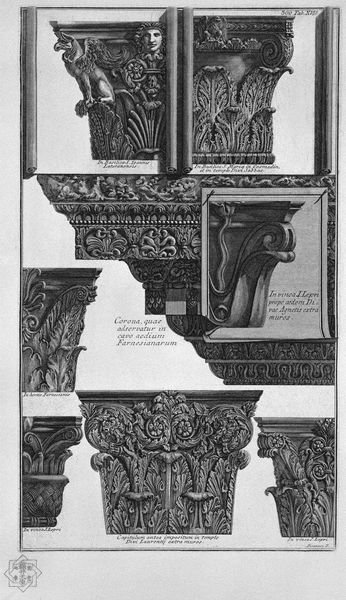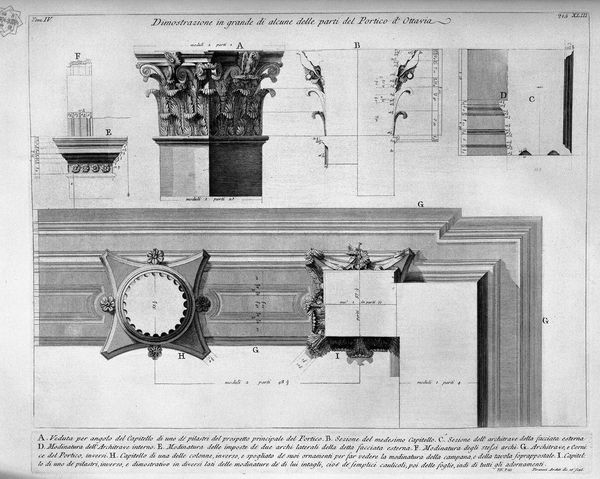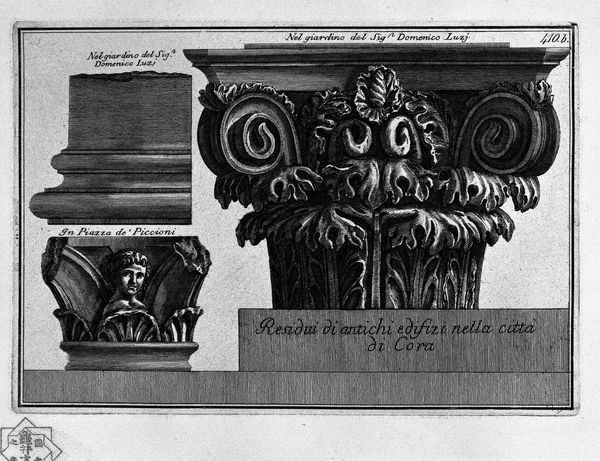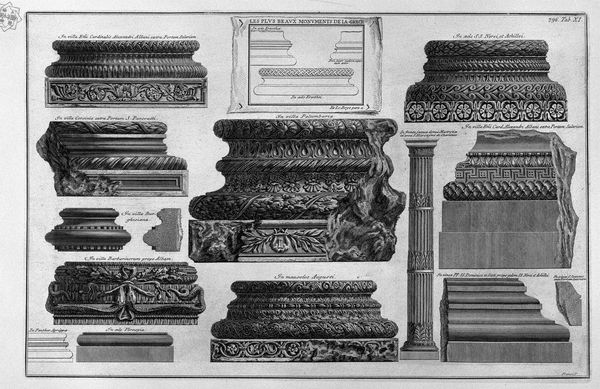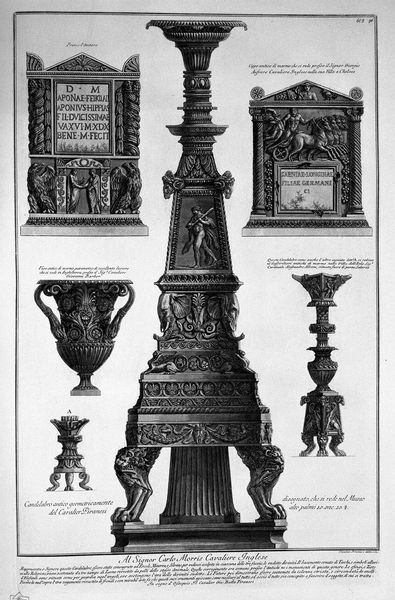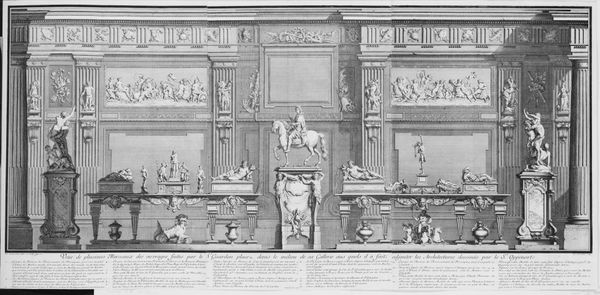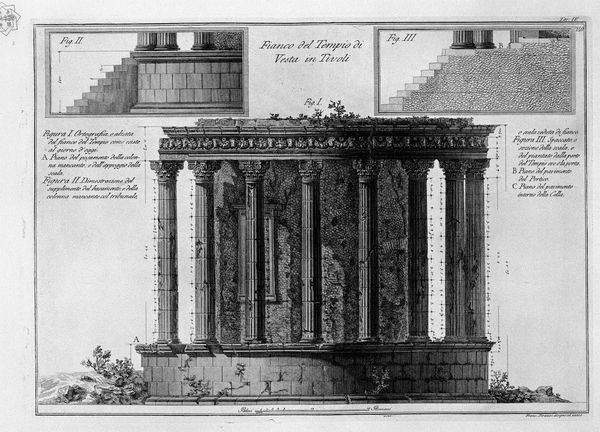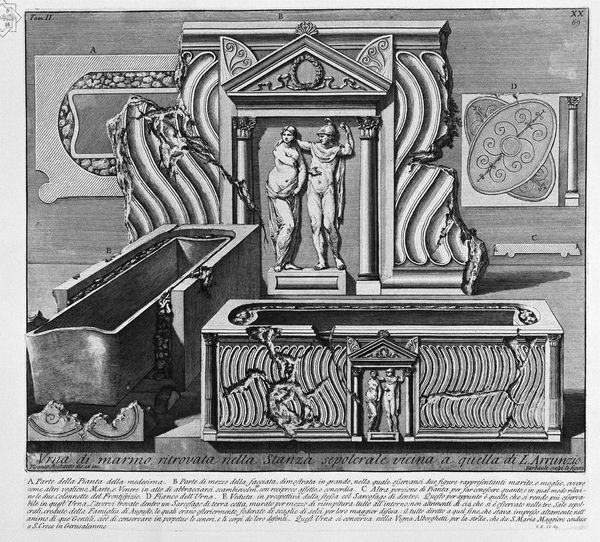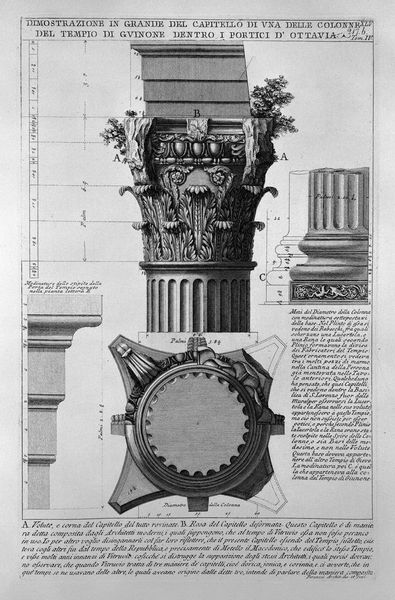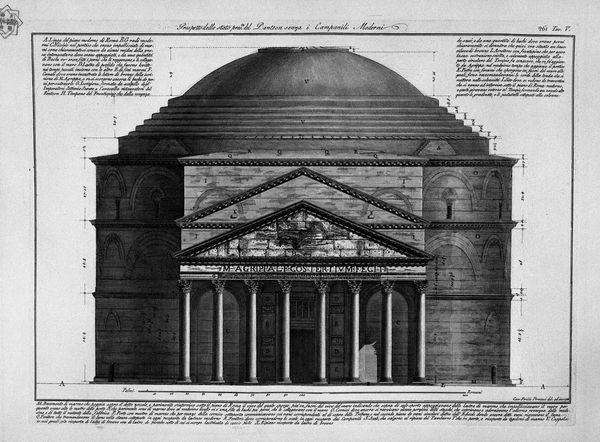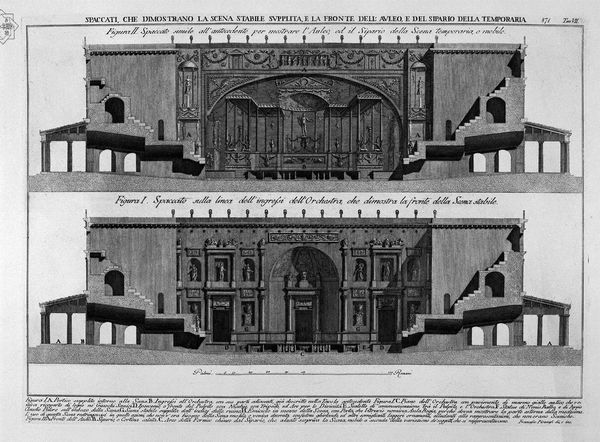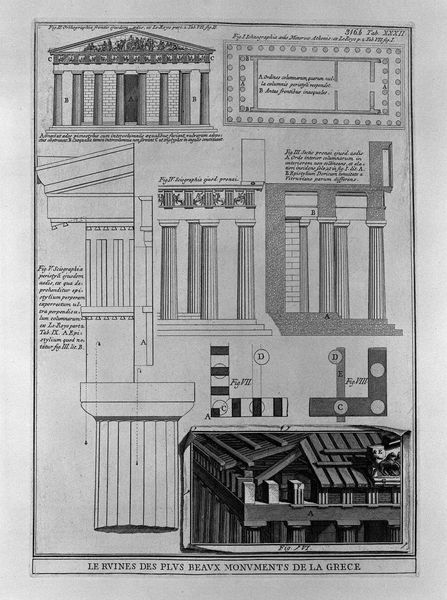
drawing, print, intaglio, engraving, architecture
#
drawing
# print
#
intaglio
#
classical-realism
#
column
#
arch
#
engraving
#
architecture
Copyright: Public domain
Editor: This is "Villa Medici Anagliphus Rome, etc. (capitals and bases)" by Giovanni Battista Piranesi, probably made as a print or engraving. I’m struck by how fragmented it looks – almost like architectural ruins displayed as trophies. What can you tell me about it? Curator: The fragmentation is key, isn't it? Piranesi, though creating an image, is dealing with the legacy of Rome – a legacy built on visual symbols of power. Even broken, these fragments speak of empire. The column, the arch – they carry weight, don't they? Psychological, historical... Editor: Absolutely, it feels both grand and mournful. But why present them in this almost clinical, catalogued way? Curator: That's the Enlightenment impulse, to classify and understand. Piranesi attempts to capture Rome's essence through precise visual record, but even in that act, loss is unavoidable. These perfect geometries contrast starkly with the reality of time's decay. Do you see how the vines creep in? Nature reclaiming what was once human. Editor: That tension is fascinating. So, is the engraving meant to be a straightforward depiction or a commentary? Curator: Piranesi wasn't merely documenting; he was interpreting, imbuing the ruins with a romantic sensibility. It is a cultural memory; he links us to antiquity but also acknowledges an inevitable cultural shift, one of loss. He's saying Rome’s architecture carries meaning that survives the collapse of their Empire. Does this resonate, or give you any feelings or thoughts? Editor: Definitely. The details convey history but speak to resilience. It is thought provoking about time, and humanity's impact on it. It now feels a bit hopeful as the columns remind us of the grandeur of an era. I hadn’t considered how symbolism plays into how we preserve culture. Curator: Precisely! Piranesi uses architecture as visual mnemonic for larger, even existential ideas. It's an engraving, yes, but also a complex cultural statement, linking past, present, and perhaps future, through symbols that continue to resonate.
Comments
No comments
Be the first to comment and join the conversation on the ultimate creative platform.
